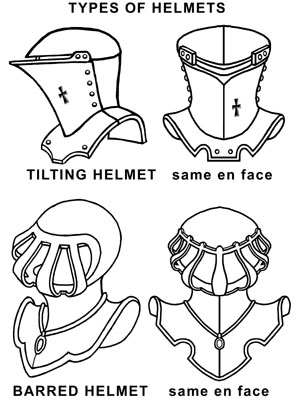Helm (Heraldry)
As the coat of arms was originally designed to distinguish combatants on the battlefield or in a tournament, even while covered in armour, it is not surprising that heraldic elements were often also used for the decoration of knightly helmets, while it was also possible to use different elements than on the shield, but equally standardized.
Furthermore, it became common to use a helmet (and/or some other headgear, e.g. a crown or coronet) as part of the coat of arms, above the shield, a practice maintained long after its use in reality was ended by military technology and the demise of jousting. In some systems, the rank of the bearer was reflected in the model of the emblematic helmet, e.g. the metal and the number of bars in the visor, as in France. Often the open faced helm reflected high ranks of nobility, while the closed faced or tilting helm were used for untitled nobility (such as children of a Duke, etc) Other headgear was also used. An example is the bishops hat would be for a member of the clergy. Either way, the rank can be reflected by a coronet or wreath placed on the helmet (often instead of directly above the shield).
